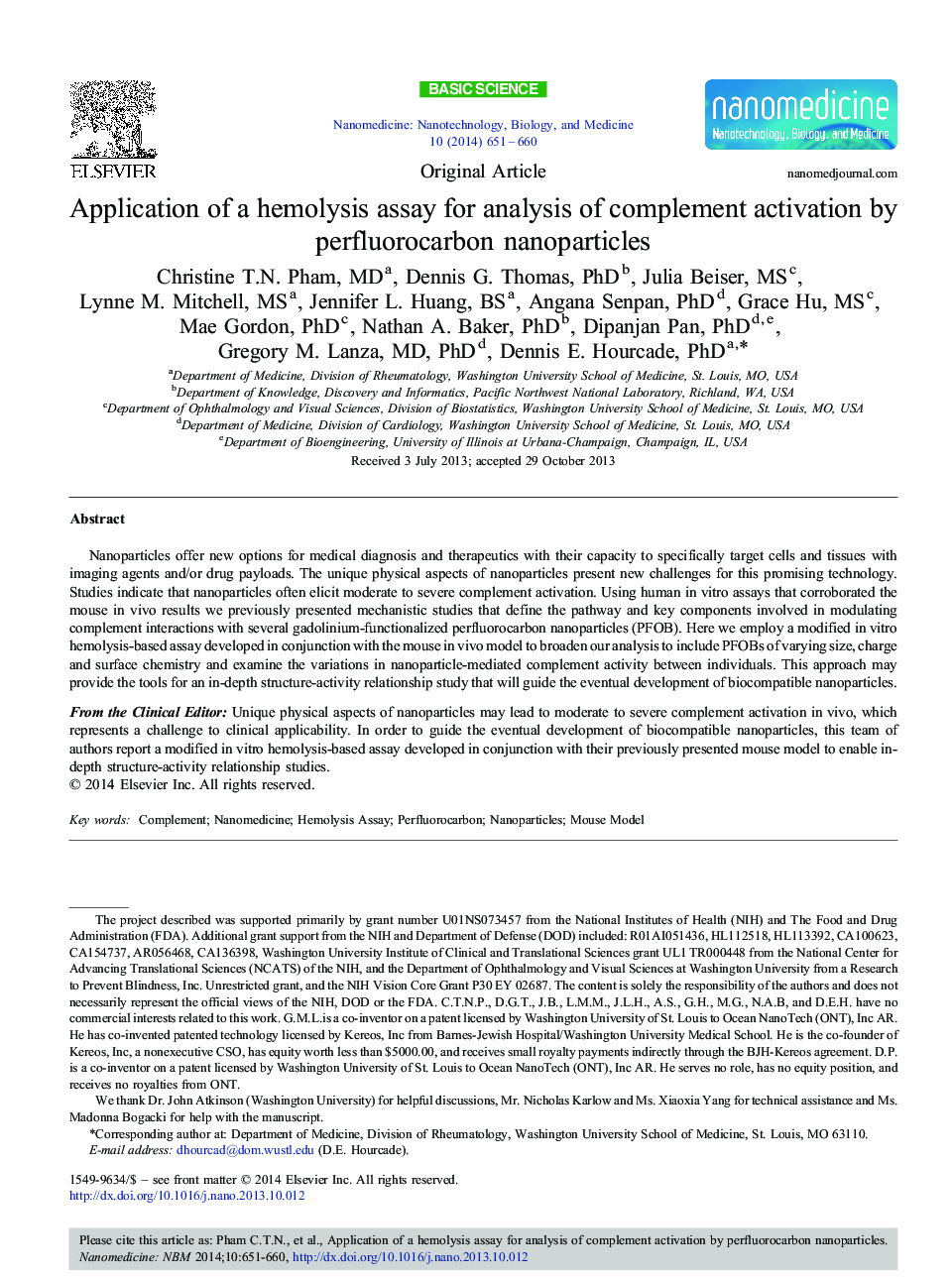| کد مقاله | کد نشریه | سال انتشار | مقاله انگلیسی | نسخه تمام متن |
|---|---|---|---|---|
| 877666 | 911039 | 2014 | 10 صفحه PDF | دانلود رایگان |

Nanoparticles offer new options for medical diagnosis and therapeutics with their capacity to specifically target cells and tissues with imaging agents and/or drug payloads. The unique physical aspects of nanoparticles present new challenges for this promising technology. Studies indicate that nanoparticles often elicit moderate to severe complement activation. Using human in vitro assays that corroborated the mouse in vivo results we previously presented mechanistic studies that define the pathway and key components involved in modulating complement interactions with several gadolinium-functionalized perfluorocarbon nanoparticles (PFOB). Here we employ a modified in vitro hemolysis-based assay developed in conjunction with the mouse in vivo model to broaden our analysis to include PFOBs of varying size, charge and surface chemistry and examine the variations in nanoparticle-mediated complement activity between individuals. This approach may provide the tools for an in-depth structure-activity relationship study that will guide the eventual development of biocompatible nanoparticles.From the Clinical EditorUnique physical aspects of nanoparticles may lead to moderate to severe complement activation in vivo, which represents a challenge to clinical applicability. In order to guide the eventual development of biocompatible nanoparticles, this team of authors report a modified in vitro hemolysis-based assay developed in conjunction with their previously presented mouse model to enable in-depth structure-activity relationship studies.
Graphical AbstractA hemolysis assay was employed to analyze the complement activity of perfluorocarbon nanoparticles: Nanoparticles were incubated with human serum and the complement-dependent hemolytic activity of the resulting reaction mixture determined: If nanoparticles do not activate complement (left panels), the reaction mixture supports the normal complement-dependent lysis of antibody-sensitized blood cells. If nanoparticles activate complement (right panels), serum complement components are depleted, and the hemolytic activity of the reaction mixture is diminished. Residual complement activity was quantified and used to compare the complement activity of nanoparticles of varying size, charge and surface chemistry.Figure optionsDownload high-quality image (225 K)Download as PowerPoint slide
Journal: Nanomedicine: Nanotechnology, Biology and Medicine - Volume 10, Issue 3, April 2014, Pages 651–660